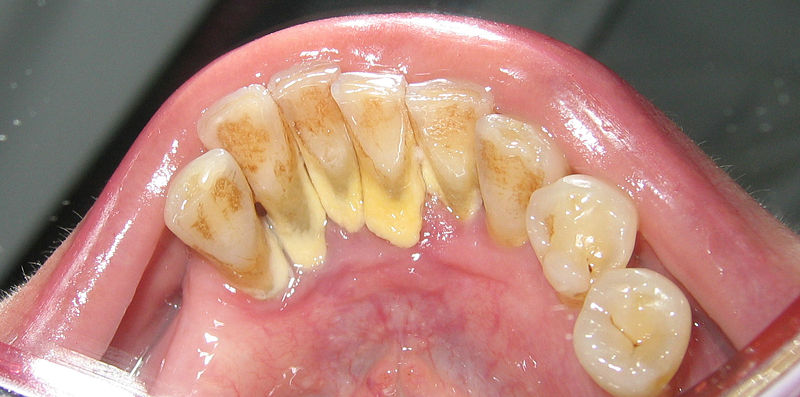Calculus (dental)
| Calculus (dental) |
|
WikiDoc Resources for Calculus (dental) |
|
Articles |
|---|
|
Most recent articles on Calculus (dental) Most cited articles on Calculus (dental) |
|
Media |
|
Powerpoint slides on Calculus (dental) |
|
Evidence Based Medicine |
|
Cochrane Collaboration on Calculus (dental) |
|
Clinical Trials |
|
Ongoing Trials on Calculus (dental) at Clinical Trials.gov Trial results on Calculus (dental) Clinical Trials on Calculus (dental) at Google
|
|
Guidelines / Policies / Govt |
|
US National Guidelines Clearinghouse on Calculus (dental) NICE Guidance on Calculus (dental)
|
|
Books |
|
News |
|
Commentary |
|
Definitions |
|
Patient Resources / Community |
|
Patient resources on Calculus (dental) Discussion groups on Calculus (dental) Patient Handouts on Calculus (dental) Directions to Hospitals Treating Calculus (dental) Risk calculators and risk factors for Calculus (dental)
|
|
Healthcare Provider Resources |
|
Causes & Risk Factors for Calculus (dental) |
|
Continuing Medical Education (CME) |
|
International |
|
|
|
Business |
|
Experimental / Informatics |
Overview
In dentistry, calculus or tartar refers to calcified deposits on the teeth, formed by the continuous presence of dental plaque. Its rough surface provides an ideal medium for further plaque formation, threatening the health of the gingiva. Calculus absorbs unaesthetic stains far more easily than natural teeth.
Calculus accumulations occur in the absence of adequate oral care. Once formed, it is generally too firmly adherant to teeth to be removed with anything available to an individual at home; patients with calculus must therefore visit their dental professionals so that the calculus can be removed with ultrasonic tools and specialized sharp instruments.
Clinical significance

Plaque accumulation causes the gingiva to become irritated and inflamed, and this is referred to as gingivitis. When the gingiva become so irritated that there is a loss of the connective tissue fibers that attach the gums to the teeth and bone that surrounds the tooth, this is known as periodontitis. Because dental plaque is the sole cause of periodontitis, it is referred to as the primary etiology. Plaque that remains in the oral cavity long enough will eventually calcify and become calculus. Calculus is detrimental to gingival health because it serves as a trap for increased plaque formation and retention; thus, calculus, along with everything else that causes a localized build-up of plaque, is referred to as a secondary etiology of periodontitis.
Calculus can form both along the gumline, where it is referred to as supragingival ("above the gum"), and within the narrow sulcus that exists between the teeth and the gingiva, where it is referred to as subgingival ("below the gum"). Calculus formation can result in a number of clinical manifestations, including bad breath, receding gums and chronically inflamed gingiva.
When plaque is supragingival, the bacterial content consists mostly of aerobic bacteria, or those bacteria which utilize and can survive in an environment containing oxygen. Subgingival plaque, however, is composed mainly of anaerobic bacteria, or those bacteria which cannot exist in an environment containing oxygen. Anaerobic bacteria are especially dangerous to the gingiva and the gingival fibers that attach the teeth to the gums, leading to periodontitis. Almost all individuals with periodontitis exhibit considerable subgingival calculus deposits. These anaerobic bacteria have been linked to cardiovascular disease and pre-term low birth weight babies, but there is no conclusive evidence yet that periodontitis is a significant risk factor for either of these two conditions.[1]
Prevention
The best way to prevent the build up of calculus is through twice daily toothbrushing and flossing and regular cleaning visits based on a schedule recommended by the dental health care provider. Calculus accumulates more easily in some individuals, requiring more frequent brushing and dental visits. There are also some external factors that facilitate the accumulation of calculus, including smoking and diabetes.
References
See also
zh-min-nan:Khí-tái de:Zahnstein is:Tannsteinn it:Tartaro (medicina) ko:치석 nl:Tandsteen no:Tannstein nn:Tannstein sr:Зубни каменац sv:Tandsten th:คราบหินปูน